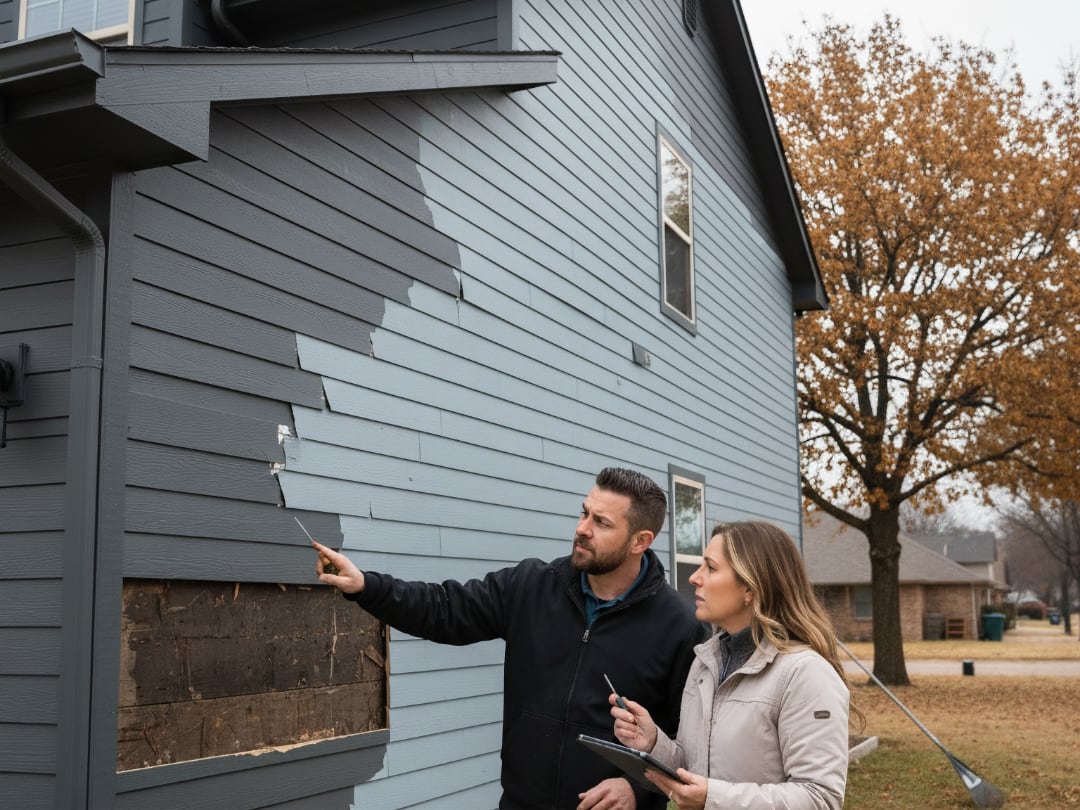Based on recommendations from fencing contractors and home improvement experts, here is a comprehensive guide to winter-proofing your fence.
Winter can be a fence's worst enemy. The combination of moisture, freezing temperatures, and the weight of snow and ice can lead to rot, rust, and structural damage. Local experts agree that a little preventative maintenance in the fall can save you from costly repairs in the spring.
Here are the essential tips to get your fence ready for the cold.
1. Inspect and Repair (Don't Wait)
Before the first frost, walk the entire length of your fence line and look for any existing damage. Winter will turn small problems into big ones.
- For Wood Fences: Look for signs of rot, splitting, or warping. Check for any loose boards, protruding nails, or screws.
- For Metal Fences: Inspect for rust, corrosion, or any bent sections.
- For Vinyl Fences: Check for any cracks or loose panels.
Expert Tip: Pay close attention to gates and hardware. Ensure gates swing freely, are properly aligned, and that latches and hinges are secure. Tighten any loose screws and replace any broken hardware. A misaligned gate can be forced and broken by ice buildup.
2. Clean Thoroughly
Dirt, leaves, mold, and mildew all trap moisture against your fence. When that moisture freezes, it expands, damaging the fence material.
- Remove Debris: Clear away any leaves, weeds, or debris piled up against the base of your fence. This allows for better airflow and drainage, preventing moisture from sitting against the posts.
- Wash the Fence: Use a pressure washer on a low setting or a stiff-bristle brush with a mild, fence-safe cleaner (e.g., a simple water/vinegar mix for vinyl or a dedicated wood cleaner). This removes grime and mildew that can lead to grime and decay.
- Let it Dry: Ensure the fence is completely dry before moving on to the next step.
3. Apply a Protective Sealant (The Winter Jacket)
This is the single most important step for wood and metal fences. A sealant acts as a barrier, repelling moisture from snow, sleet, and ice.
- For Wood Fences: Apply a high-quality, water-repellent sealant or stain. Oil-based stains tend to penetrate deeper, offering excellent protection. This "winter jacket" prevents water from soaking into the wood, where it can freeze, expand, and cause cracks and splits.
- For Metal Fences: Sand away any rust spots you found during your inspection. Once clean, apply a rust-resistant primer and a coat of exterior-grade paint or a clear sealant.
- For Vinyl Fences: Vinyl is naturally water-resistant, but you should still seal any cracks you find with a vinyl-safe sealant or caulk to prevent water from getting inside.
4. Manage Your Landscaping
Your yard can be a threat to your fence in the winter.
- Trim Overhanging Branches: Heavy snow and ice can weigh down tree branches, causing them to snap and fall on your fence. Trim back any branches that are looming over or touching the fence line.
- Prune Nearby Shrubs: Bushes growing right against the fence trap moisture and block airflow. Trim them back to give your fence at least a foot of breathing room.
5. Protect Your Posts from Frost Heave
"Frost heave" is what experts call it when the water in the soil freezes, expands, and pushes your fence posts right out of the ground, leaving your fence crooked and unstable.
- Check Post Depth: The best defense is ensuring posts are set below your area's "frost line" (the depth to which the ground freezes). This is a "local" factor that varies by region. If your posts are already heaving, you may need a professional to reinstall them.
- Ensure Proper Drainage: The problem is caused by water, so manage it. Ensure the soil slopes away from your fence posts. You can even dig down a few inches around the post and add gravel to help water drain away from the base.
- Install Post Caps: Make sure every post (especially wood) has a secure cap. This prevents water from getting inside the post, where it can freeze and split the wood from the inside out.
6. During the Winter: Maintenance
Your job isn't quite done when the snow falls.
- Don't Pile Snow: When shoveling your driveway or walkways, do not pile the snow against your fence. The immense weight and constant moisture are a recipe for disaster.
- Gently Remove Buildup: After a heavy, wet snowfall, use a soft-bristled broom or a plastic snow remover (never a metal shovel) to gently brush the snow off the top of your fence. This reduces the strain on the panels and posts.
- Never Use Salt: Do not use rock salt or chemical de-icers on or near your fence. These can be corrosive to metal hardware and can damage and discolor wood.
- Don't Chip Ice: Avoid the temptation to chip ice off your fence. You are far more likely to damage the fence (especially vinyl, which can become brittle in the cold) than to help it.
Need Professional Help Winter-Proofing Your Fence in Mustang, Oklahoma City, or the Surrounding Area?
If you're in Mustang, Oklahoma City, Yukon, Norman, Moore, Bethany, Edmond, or anywhere in the greater OKC metro and prefer to leave your fence's winter prep to the pros, contact TaylorMade Exteriors! From thorough inspections and repairs to sealing and post protection, our local experts are ready to help ensure your fence stands strong through the Oklahoma winter.
Visit us at taylormadeexteriors.com to schedule your winter fence maintenance today!









